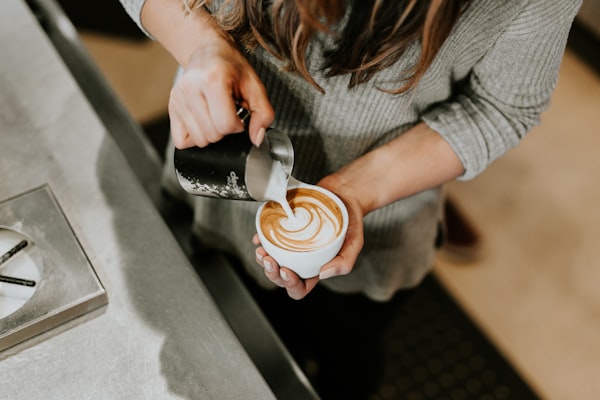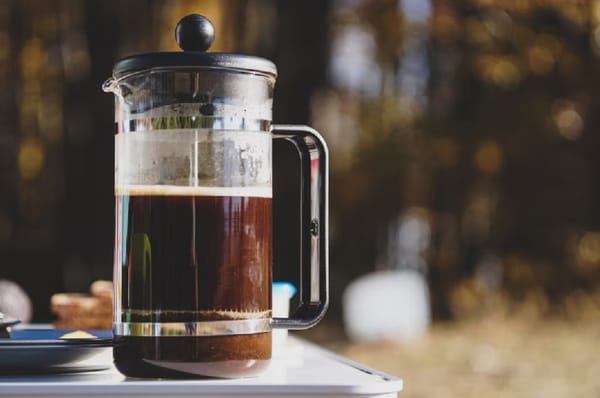Top Five Hacks For Coffee Bean Storage

As a coffee enthusiast, you must be well-rehearsed in making coffee that’s borderline perfect and contains all the necessary elements that you love about this globally acclaimed beverage. But do you know how to store your precious coffee beans, so they don’t go stale or lose their aroma? If not, this article is precisely for you!
If you are a beginner at coffee bean storage or want to inform yourself on the many ways you can store your precious coffee beans, we have all the spicy details for you. Let’s start.
How Long Does Coffee Last?
In short, it depends. A normal jar of ground coffee can retain its aroma and joyful characteristics for two weeks. If you’re extra careful in your storage methods, you might make it close to three weeks, but after that, the coffee starts to turn stale.
On the contrary if you choose whole bean coffee and grind the beans yourself before brewing up every cup, you can make your precious stash last for a good month. Of course grinding beans is a seemingly hectic process but it will be well-worth the retained soul-refreshing taste in your coffee.
Keep in mind that you can still use coffee if has turned stale as it doesn’t expire for three to five months. Whole bean coffee can last up to nine months depending on how you preserve it. Since we, the coffee enthusiasts, prefer to have the original coffee flavor, it stops making sense to sit on a stale coffee stash for months.
Fun fact: Brewed coffee only retains its characteristics for about thirty minutes before the nutrients get absorbed by the air.
What Makes Coffee Go Bad?
Before we get into the details, let’s discuss the primary degrading factors that affect coffee beans adversely and prove the death of good coffee. There are four main culprits: air, moisture, light, and heat.
The oxygen in the air oxidizes the roasted beans, making them stale faster. Oxidization chemically alters the molecules of your coffee and makes it lose the taste and aroma.
The moisture gets absorbed in the coffee beans (due to their hygroscopic nature), and dissolves the coffee molecules, accelerating the deteriorating process.
Sunlight has ultraviolet rays that can alter the molecular structure of coffee beans. It also evaporates valuable components of coffee responsible for its unique flavor.
Excessive heat exposurecan accelerate the aging process of your coffee as it’ll cause the oils to come to the surface, which causes release of carbon dioxide. The faster a coffee jar produces CO2, the quicker it ages and becomes bland. The ideal temperature to store your coffee beans is between 20 to 25 degrees celcius.
Naturally, if you’re storing your coffee in a standard container or the plastic bag it came in, your coffee will stay exposed to all these elements and continue to lose its flavor. So what’s the solution?
Coffee Bean Storage: Top Five Ways to Store Coffee Beans:
Here are the top five best ways to store your coffee beans, so they retain their flavor for the longest. Take a look:
Use The Coffee Bag If Possible:
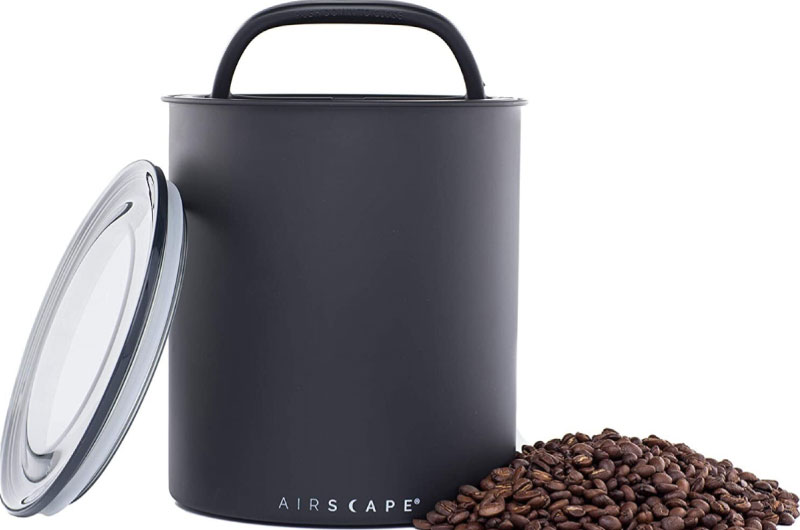
Often the best way to store coffee beans is in the bag they come in — reseal, protect, and keep the air out. Of course, not all coffee bags are made to keep the coffee beans secure for extended periods. But most new ones come with gas-release valves that allow excess carbon dioxide to escape while not letting any air in from the outside. If you purchase such a bag, keeping it as the designated container for your coffee beans is more than ideal.
Another plus point of using the original packaging is no sunlight exposure. The less your coffee will receive light, the longer it can hold on to its original flavor. All in all, ensure that you don’t open the bag too often and seal it back carefully after taking out your fill for the morning.
The Storing Container Choice:
We have often seen people transfer the coffee beans from the bag to a fancy container that surprisingly looks remarkable sitting on the kitchen counter. It’s a good practice, but you have to make sure that the container is up to the standards and offers certain vital elements known to keep coffee beans safe. Luckily, tons of professional-grade storage containers are well worth the investment in the current market.
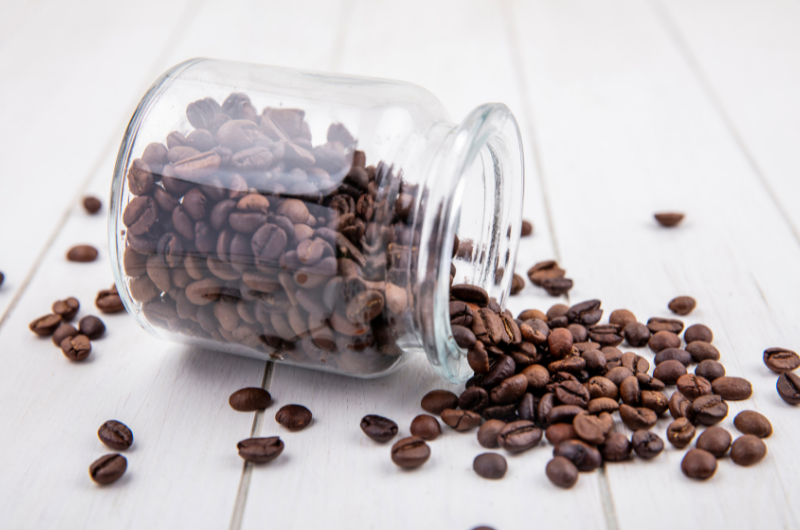
The critical elements of the ideal storing containers are:
Non-reactive material:
Suppose you store coffee beans in a container made from a reactive material such as metal. The coffee beans will probably get an induced, unwanted flavor from the reactions within the jar, compromising your daily cup of Joe. So ideally, you should choose a material that is non-reactive and rigid, like glass or ceramic.
- Completely airtight:
The second thing to keep in mind while purchasing or choosing a container for coffee bean storage is making sure that it’s wholly airtight and doesn’t let moisture inside. As we mentioned, moisture is one of the primary killers of good coffee beans, and if your jar doesn’t keep the air out, you won’t be able to enjoy that batch for long.
- Opaque construction material:
Granted, coffee in clean jars looks fantastic sitting on top of the counter; this practice has some complications. Light and coffee beans do not go well together, and if the jar isn’t opaque, the passing light can continue to ruin your coffee. If you still want to use a transparent jar for aesthetic appeal, ensure that you store it in your cool, dry place where there’s no direct sunlight.
Refrigeration:
Using a fridge or freezer to store your coffee beans is possible, but it comes with some complications. Coffee stored in the freezer is prone to absorbing moisture and flavors from the surrounding, so naturally, if you put it in the freezer, it’ll go rancid quickly, especially if the container is not explicitly made for this purpose.
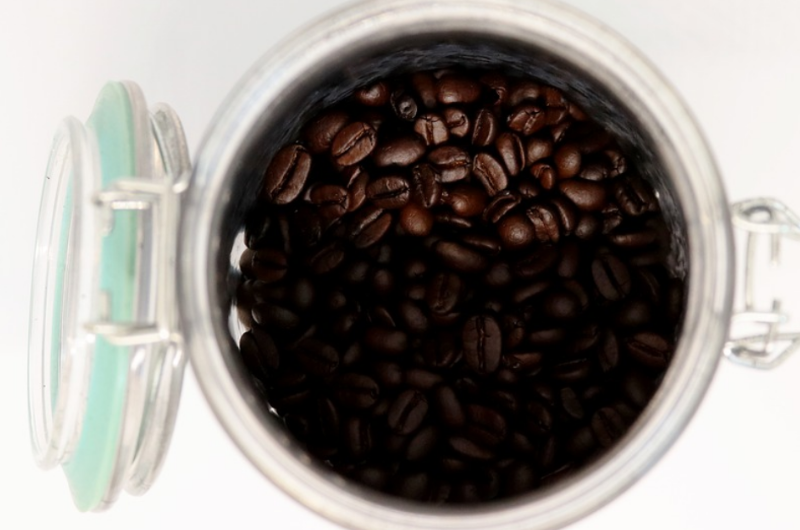
To avoid this problem, you must choose a professional-grade airtight container that is well-tested for airflow. Such containers can keep the coffee beans’ freshness intact for the maximum time without compromising the quality.
If you want to freeze coffee beans, ensure that you don’t open the jar frequently to take out coffee for your daily needs. The ideal practice can be scooping out coffee beans for a week and then putting the rest back in the airtight container.
A bonus: A commonly known benefit of freezing coffee grounds is a more consistent grind when preparing a cup. This way, the beans shatter into even sizes when put through a press, and the extraction is much better.
Buy Less, No Stress:
Fun fact: Roasted coffee beans start losing their taste and aroma in about two weeks. Even if you implement the most definitive preservation solutions to your ground coffee beans, they are most likely to change their taste after the given two-week period. Of course, the coffee beans would still be usable, but they won’t have their original flavor or taste too stale.
So it is best to buy less coffee at a time and buy more when you run out. You’ll make frequent trips to the supermarket, but it will be worth having fresh coffee every day. Ideally, a standard jar of branded coffee lasts for about two-three weeks, which is perfect for many buyers who are used to two cups per day.
If you buy a lot of coffee beans at once, you’ll probably not have to worry about running out anytime soon, but this practice will highly diminish the quality of the coffee. The taste would be different and influenced by the surrounding factors while being much less refreshing than when you first popped open the jar.
Opt For Whole Bean Coffee:
Ground coffee beans tend to go stale sooner than whole bean coffee, and this happens due to the broader surface area of ground coffee beans which stays exposed to oxidation by the moisture in the air. If you want the perfect cup, it is best to grind your beans every time you need your fill of caffeine. Of course, it will be an ordeal for some, but it’s well-worth the elevated drinking experience.
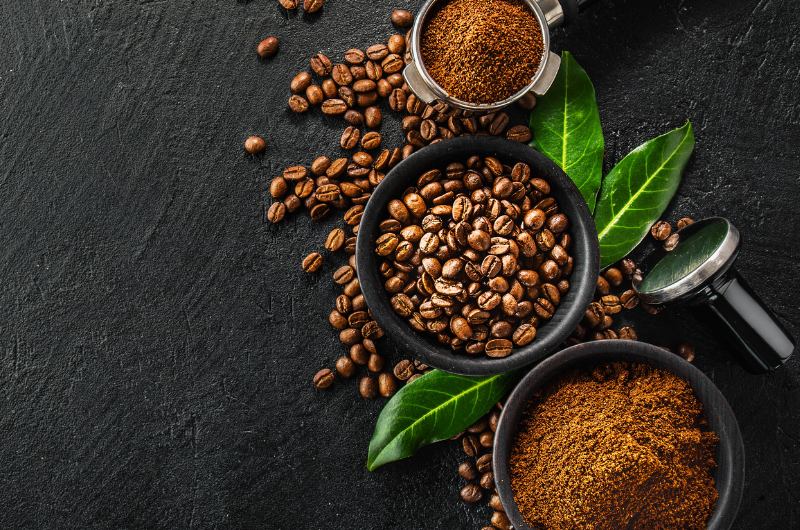
Whole beans last for about a month before they start to lose their characteristics, while ground coffee beans are only good for two weeks.
Dos and Don’ts:
Dos:
- Opt for a cool, dry, and dark place to store your stash
- Always use airtight containers (preferably opaque)
- Grind your coffee beans right before brewing a cup
- Keep the jar on the kitchen shelf if you’re using a dark container
Don’ts:
- Refrigerate coffee without a professional-grade airtight container
- Leave the jar in sunlight
- Leave the jar open or improperly closed
- Try to store large quantities of coffee at once unless necessary
Conclusion:
A thorough read of the many points mentioned in this article will help you understand the most practical ways to preserve coffee bean freshness. We understand how much coffee needs to be refreshing, and your daily cup is just about to get better. Ensure that you’re sourcing reliable coffee beans or grinding your own, so your preservation practices aren’t a waste.

